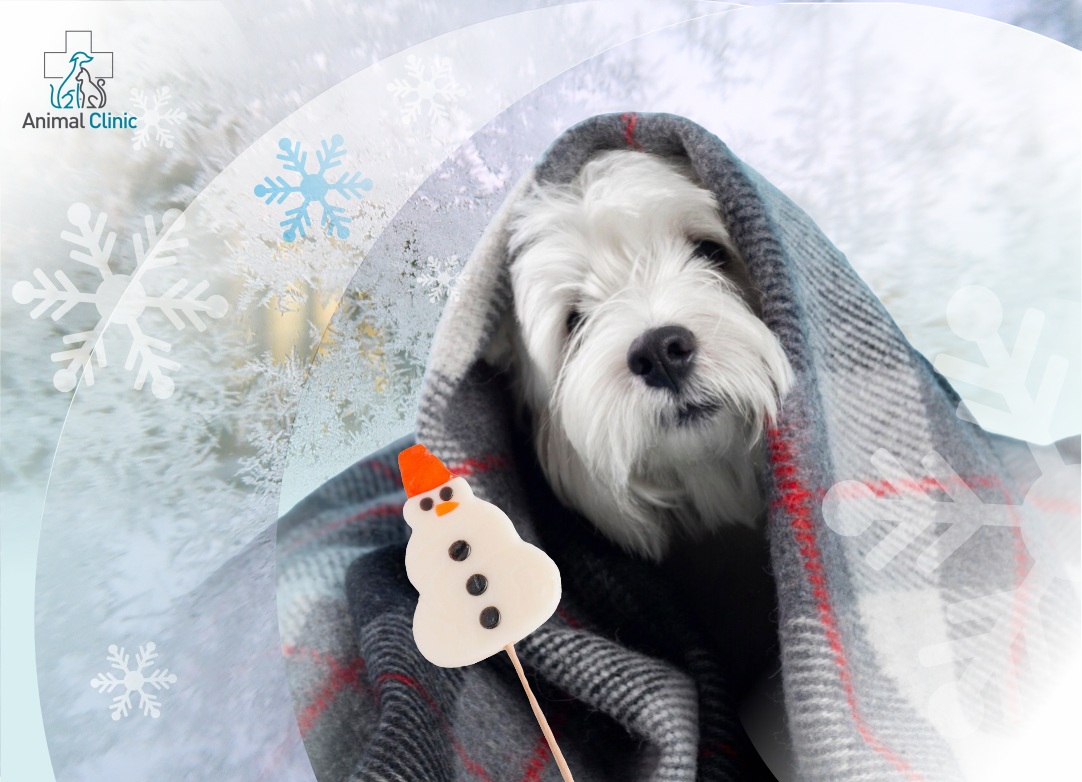- Main
- News and events
- Hypothermia and Frostbite in Pets: How to Recognize and Provide First Aid
Hypothermia and Frostbite in Pets: How to Recognize and Provide First Aid

Prolonged exposure to cold temperatures can cause a pet's body temperature to drop, especially if the animal is wet. Spending too much time outdoors in winter or in a cold room can lead to hypothermia or frostbite. Learn how to recognize these conditions and help your pet in this article prepared by Animal Clinic veterinarians.
How Does Hypothermia Manifest?
Hypothermia is a drop in body temperature below the normal range. This condition puts severe stress on the pet’s body, slowing metabolism, impairing organ function, and, in severe cases, leading to organ failure.
Pets particularly sensitive to cold include:
- Puppies and kittens
- Small-breed dogs
- Senior animals
Signs of Hypothermia:
- Body temperature of 36°C or lower
- Curling into a ball or seeking warm places
- Shivering
- Alternating the lifting of paws (common in dogs during walks)
- Pale mucous membranes and skin
- Stiff muscles
- Shallow breathing
- Dilated pupils
- Weak heartbeat
In severe cases, hypothermia may result in sudden cardiovascular failure, coma, or death. If you notice your pet shivering, immediate action to warm them is essential.
First Aid for Hypothermia
-
Wrap the Pet in a Blanket or Towel,
If the animal is wet due to rain or snow, bathe them in warm water or gently wipe them with a dry towel. -
Provide External Heat
Use warm water bottles (heated to 36–37°C) to help warm the pet. -
Monitor Temperature
Measure the pet’s rectal temperature every 10 minutes until it reaches 37°C. -
Rehydrate
Offer a few spoonfuls of glucose solution (dissolve 4 teaspoons of sugar in 500 ml of warm water).
In Case of Unconsciousness:
Hypothermia can cause the pet to lose consciousness due to slowed metabolism. If this happens:
- Perform cardiopulmonary resuscitation (CPR).
- Seek immediate veterinary assistance.
Recognizing Frostbite in Pets
Frostbite occurs when low temperatures damage the skin and underlying tissues. The most susceptible areas are:
- Ears
- Paws
- Scrotum
- Tail
Signs of Frostbite:
- Mild: Pale skin that reddens and swells after warming. Hair loss may occur in the affected area.
- Severe: Necrotic tissues turn dark, harden, and may eventually slough off.
First Aid for Frostbite
-
Warm the Affected Area
Immerse the frostbitten area in warm water for 20 minutes. -
Avoid Rubbing or Massaging
Never rub the animal with snow or massage the frostbitten skin, as the tissues are fragile and may be further damaged. -
Prevent Licking
Once sensitivity returns, the pet may feel pain but should not be allowed to lick the affected area. -
Seek Professional Care
Bring your pet to Animal Clinic as soon as possible. A veterinarian will assess the damage and prescribe medication to prevent infection.
Timely recognition and proper first aid can save your pet from serious health complications caused by hypothermia or frostbite. Always prioritize warmth and safety during the winter months!
